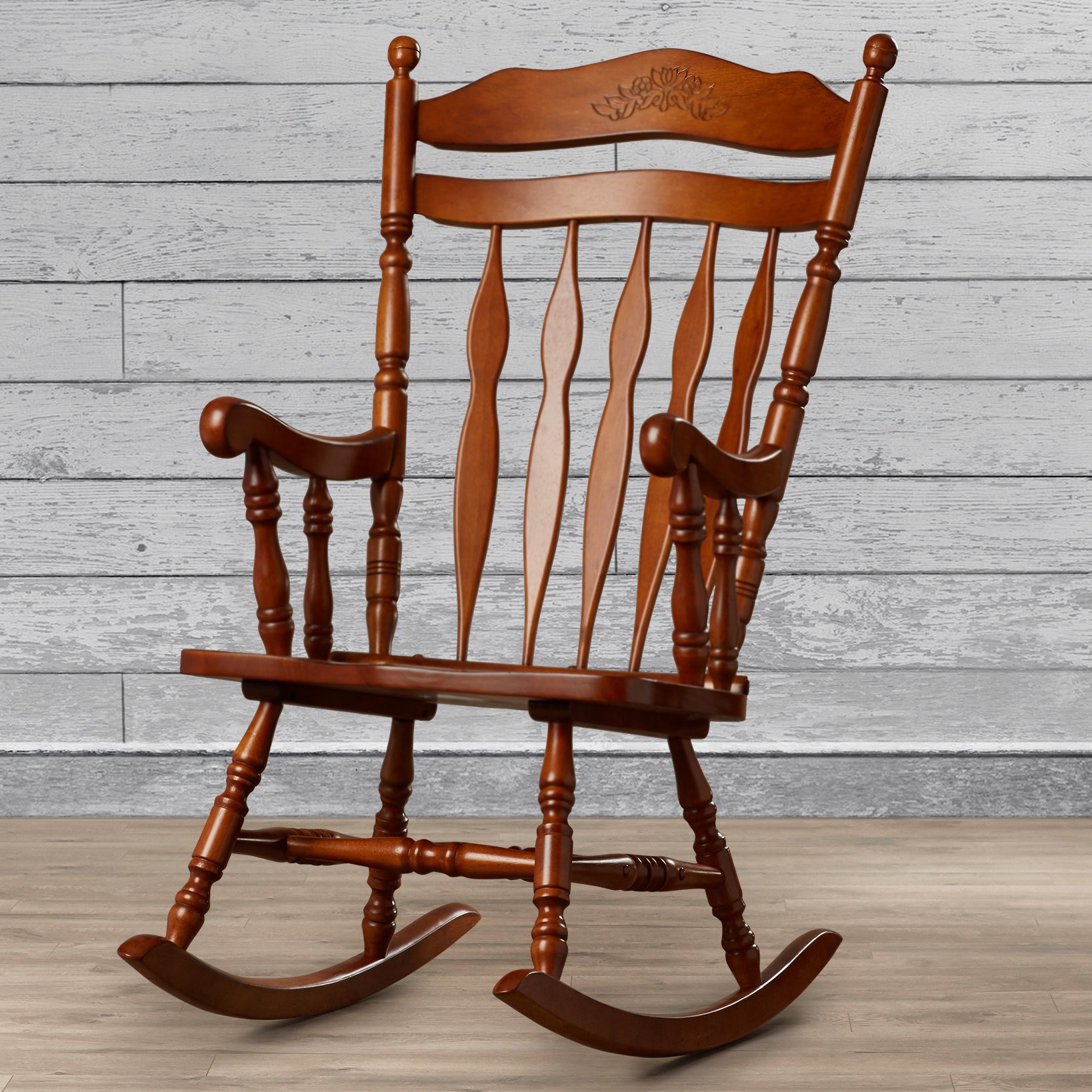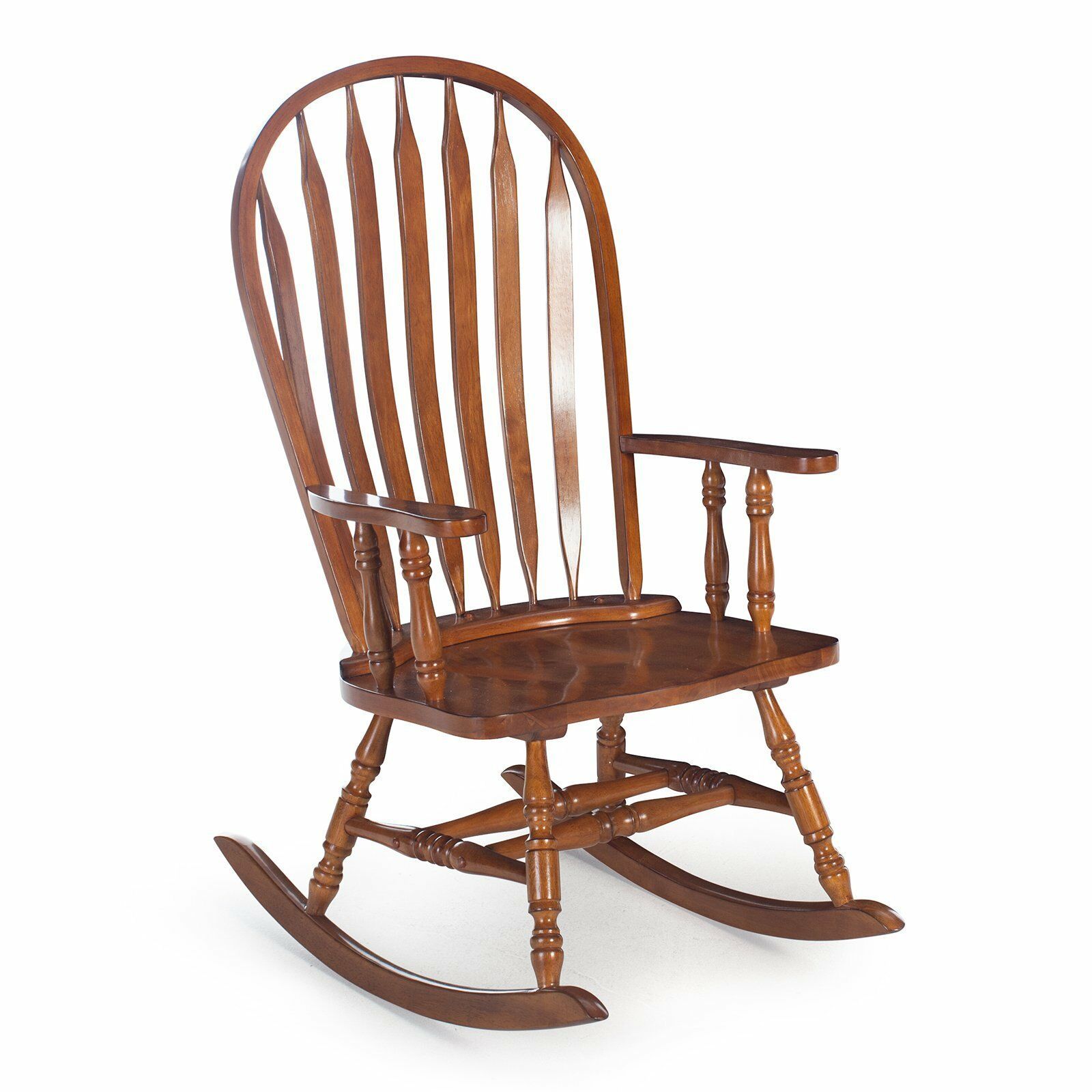History and Craftsmanship of Oak Wood Rocking Chairs

The rocking chair, a symbol of comfort and relaxation, boasts a rich history intertwined with the enduring strength and beauty of oak wood. From humble beginnings to its current status as a cherished piece of furniture, the oak rocking chair’s journey reflects evolving design aesthetics and craftsmanship techniques. Its enduring popularity speaks to its timeless appeal and the inherent quality of the material used in its creation.
Evolution of Rocking Chair Design and Oak Wood’s Role
The earliest rocking chairs, predating widespread oak usage, were likely simpler designs crafted from readily available materials. However, as oak’s popularity grew due to its strength, durability, and aesthetic qualities, it quickly became a preferred material for rocking chair construction. The transition to oak allowed for more intricate designs and increased longevity. Early examples often featured simpler forms, evolving gradually into the more ornate and comfortable styles we recognize today. The introduction of steam-bending techniques in the 19th century allowed for more curved and graceful designs, further enhancing the rocking chair’s aesthetic appeal when crafted from oak.
Traditional and Modern Joinery Techniques in Oak Rocking Chair Construction
Traditional joinery techniques for oak rocking chairs emphasized strong, durable connections using mortise and tenon joints, dovetail joints, and pegged construction. These methods, passed down through generations of skilled craftsmen, prioritized structural integrity and longevity. Modern methods often incorporate the use of screws, dowels, and adhesives alongside traditional techniques, offering a blend of speed and strength. While some argue that traditional joinery results in a superior and more aesthetically pleasing product, modern techniques allow for greater efficiency and sometimes offer comparable durability. The choice between traditional and modern methods often depends on the desired aesthetic, the budget, and the level of craftsmanship involved.
Types of Oak Wood Used and Their Impact
Several types of oak are employed in rocking chair manufacturing, each influencing the final product’s durability and appearance. White oak, renowned for its strength and water resistance, is a popular choice for outdoor rocking chairs or those exposed to high humidity. Red oak, slightly softer than white oak, offers a rich reddish hue and is often preferred for indoor chairs where its slightly less durable nature is less of a concern. The grain pattern, color variations, and overall character of the wood contribute significantly to the chair’s unique aesthetic appeal. The choice of oak type is often a balance between durability, aesthetic preference, and cost.
Timeline of Oak Rocking Chair Production and Popularity
The popularity of oak rocking chairs has fluctuated throughout history, reflecting broader design trends and societal preferences. Below is a simplified timeline highlighting key milestones:
| Era | Style | Wood Type | Notable Features |
|---|---|---|---|
| 18th Century | Simple, functional designs | Various hardwoods, early adoption of oak | Basic construction, limited ornamentation |
| 19th Century | Increased ornamentation, curved designs | Primarily oak, various finishes | Steam-bending techniques, spindle backs, elaborate carvings |
| Early 20th Century | Mission style, Arts & Crafts movement influence | Oak, often with dark stains | Simple lines, emphasis on craftsmanship, sturdy construction |
| Mid-20th Century to Present | Diverse styles, revival of traditional designs | Oak remains popular, alongside other hardwoods | Mass production alongside handcrafted pieces, wide range of finishes and styles |
The Appeal and Practicality of Oak Wood Rocking Chairs

Let’s be honest, there’s something undeniably *cozy* about a rocking chair, especially one crafted from rich, sturdy oak. It’s more than just a piece of furniture; it’s an invitation to unwind, reflect, and maybe even doze off with a good book. This section dives into the sensory delights, ergonomic benefits, and lasting quality that make oak rocking chairs so appealing and practical.
Sensory Experience of Oak Wood Rocking Chairs
The sensory experience of sitting in an oak rocking chair is a symphony for the senses. The scent of the wood itself, depending on the finish, can range from a subtle, earthy aroma to a richer, more pronounced woody fragrance. The texture is equally captivating; the smooth, polished surface invites the touch, while the natural grain of the wood offers a unique tactile experience. The gentle creak and rhythmic swoosh of the chair as it rocks creates a soothing soundscape, a comforting lullaby for the ears. This multi-sensory experience contributes significantly to the overall relaxation and enjoyment associated with the chair.
Ergonomic Aspects and Comfort
A well-designed oak rocking chair prioritizes ergonomics, ensuring comfort and proper posture. The gentle rocking motion can help to alleviate back pain and improve circulation. The curvature of the seat and back rest should provide ample support for the spine, promoting good posture. The armrests, if present, should be positioned to allow for a relaxed and natural arm placement. Consider the height of the seat and back relative to the user’s height for optimal comfort and support. A poorly designed chair, however, might cause discomfort and strain. Therefore, choosing a chair with thoughtful ergonomic design is crucial for maximizing its benefits.
Durability and Longevity Compared to Other Materials
Oak wood is renowned for its strength and durability. Oak rocking chairs, when properly cared for, can last for generations, far outlasting chairs made from other materials like wicker or plastic. Wicker, while aesthetically pleasing, can be prone to damage from moisture and wear, and its lifespan is significantly shorter. Plastic chairs, while inexpensive, lack the inherent warmth and character of wood and tend to degrade over time, especially under prolonged exposure to sunlight. The inherent robustness of oak makes it a superior choice for a piece of furniture intended for long-term use and enjoyment.
Hypothetical Marketing Campaign
A successful marketing campaign for an oak wood rocking chair should emphasize its unique selling points. Here’s a hypothetical campaign structure:
- Campaign Slogan: “Rock into Relaxation: The Timeless Appeal of Oak.”
- Target Audience: Individuals seeking comfort, durability, and a touch of classic elegance in their home furnishings. This includes older adults seeking relaxation, but also younger adults appreciating quality craftsmanship and sustainable materials.
- Marketing Channels: A multi-channel approach, including online advertising (targeted social media campaigns and website banners), print ads in lifestyle magazines, and collaborations with home décor influencers. Showcase the chair in aesthetically pleasing settings, emphasizing its versatility and ability to complement different home styles.
- Visual Elements: High-quality photographs and videos showcasing the chair’s natural beauty, emphasizing the grain of the oak and the smooth finish. Show individuals of various ages comfortably using the chair in different scenarios – reading, relaxing, enjoying a cup of coffee.
- Value Proposition: Highlight the chair’s durability, comfort, and timeless design, positioning it as an heirloom-quality piece that will be enjoyed for years to come. Emphasize the sustainable aspect of using oak wood and responsible sourcing practices.
Caring for and Restoring Oak Wood Rocking Chairs

Maintaining your oak rocking chair isn’t just about keeping it looking good; it’s about preserving a piece of history and ensuring it lasts for generations. Regular care prevents damage and extends the life of this beautiful piece of furniture, adding to its value and charm. A little preventative maintenance goes a long way in keeping your rocking chair in tip-top shape.
Cleaning and Maintaining Oak Wood Rocking Chairs
Regular cleaning is key to preventing dirt and grime from building up and damaging the finish. Start by dusting your chair weekly with a soft, dry cloth. For more thorough cleaning, use a slightly damp (not wet!) cloth with a mild soap solution. Always wipe the chair dry immediately after cleaning to prevent water damage. Avoid harsh chemicals or abrasive cleaners, as these can damage the wood’s finish. For stubborn stains, try a specialized wood cleaner, but always test it in an inconspicuous area first. Remember, prevention is always better than cure.
Repairing Minor Damage to Oak Wood Rocking Chairs
Minor scratches and nicks are common, especially on a well-loved rocking chair. For small scratches, you can often use a wood filler to match the color of the oak. Apply the filler according to the manufacturer’s instructions, sand it smooth once dry, and then re-stain and seal the area to blend it seamlessly. For loose joints, carefully tighten any screws or bolts. If the joint is severely loose, you might need wood glue and clamps to re-secure it. Allow the glue to dry completely before using the chair. Always handle repairs with care and precision.
Refinishing Old Oak Wood Rocking Chairs
Refinishing an old oak rocking chair can restore its original luster and beauty. This is a more involved process, but the results are well worth the effort. It’s a great way to bring new life to a cherished family heirloom.
- Necessary Tools and Materials: Sandpaper (various grits), tack cloth, wood cleaner, wood stripper (if needed), stain (choose a color that complements the oak), wood sealant or varnish, brushes, rags, safety glasses, and a respirator (for sanding and staining).
The process involves carefully removing the old finish (using a wood stripper if necessary), sanding the wood smooth, applying a new stain, and sealing it with a protective finish. Each step requires patience and attention to detail. Remember to always test your stain and sealant in an inconspicuous area before applying it to the entire chair.
Addressing Common Problems in Aging Oak Wood Rocking Chairs
Cracking and warping are common problems in older oak rocking chairs, often caused by changes in humidity and temperature. These problems can be minimized with proper care and storage.
Regularly inspect your chair for any signs of cracking or warping and address them promptly to prevent further damage.
Store your rocking chair in a climate-controlled environment, avoiding direct sunlight and extreme temperature fluctuations.
Maintaining consistent humidity levels in your home is crucial for preventing wood from drying out and cracking. A humidifier can be helpful, especially in dry climates.
For minor cracks, you might be able to use wood glue and clamps to repair them. For more severe warping, professional restoration might be necessary. Preventative care is your best defense against these issues.
